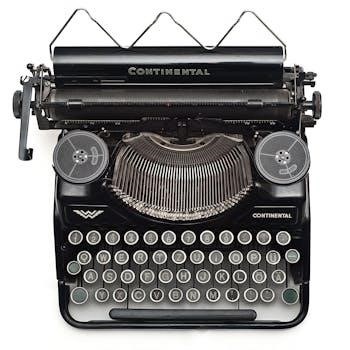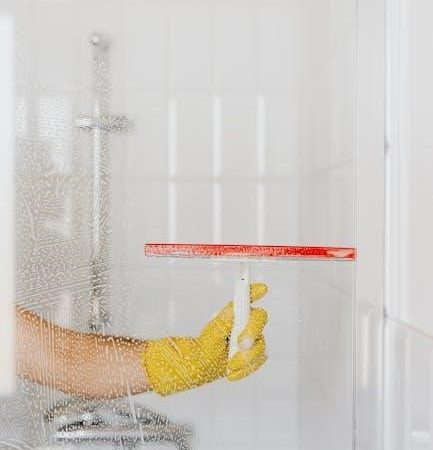retractable manual awning

Retractable Manual Awning⁚ A Comprehensive Guide
Retractable manual awnings offer a versatile shading solution for patios, decks, and windows. These awnings provide on-demand sun protection, enhancing outdoor comfort and reducing indoor temperatures. Manual operation ensures reliability and simplicity for seamless user experience.
Understanding Retractable Manual Awnings
Retractable manual awnings are shading devices that extend and retract via hand-operated mechanisms. They typically consist of fabric stretched over a frame, mounted to a wall or roof. These awnings offer adjustable sun control, allowing users to create shade when needed and retract the awning during inclement weather or when sunlight is desired. Understanding their basic components and operation is crucial for proper installation, maintenance, and long-term use. Manual operation ensures cost-effectiveness and ease of use.

Benefits of Manual Retractable Awnings
Manual retractable awnings offer several advantages, including cost savings, ease of operation, and reduced maintenance. They provide flexible shade solutions and enhance outdoor living spaces without complex electrical components, increasing user satisfaction and convenience.
Cost-Effectiveness
Manual retractable awnings present a budget-friendly alternative to motorized options, eliminating the need for electrical wiring and reducing energy consumption. The initial investment is typically lower, and there are no ongoing electricity costs. Homeowners can save money on professional installation since manual awnings are often easier to install independently. Long-term savings are realized through reduced energy bills and minimal maintenance requirements, making them a financially sound choice for homeowners seeking cost-effective shade solutions. This affordability enhances their appeal.
Ease of Use and Maintenance
Retractable manual awnings are designed for straightforward operation, typically using a hand crank or pull cord for extension and retraction. This simple mechanism requires minimal effort, providing ease of use for all users. Maintenance is also relatively simple, primarily involving periodic cleaning of the fabric with mild soap and water. The absence of electrical components reduces the risk of mechanical failures, ensuring long-term reliability with minimal upkeep. Overall, their user-friendly design and low maintenance requirements make them a practical choice for homeowners.
Types of Retractable Manual Awnings
Retractable manual awnings come in various styles, each suited for different applications. Common types include patio awnings, designed for larger outdoor spaces, and window awnings, which offer targeted shading for individual windows, enhancing versatility.
Patio Awnings
Patio awnings are designed to extend over larger outdoor areas, offering ample shade for decks and patios. These awnings are typically wider and more robust to cover expansive spaces. Manual operation is simple, usually involving a crank or pull cord to extend or retract the awning. They provide a comfortable outdoor living space by reducing sun exposure, making them ideal for entertaining or relaxing outdoors. Installation is straightforward, often requiring sturdy mounting brackets.
Window Awnings
Window awnings are designed for smaller areas, providing shade and protection specifically for windows. These awnings help to reduce heat gain inside the home, lowering energy costs and enhancing indoor comfort. Manual retractable window awnings are easy to operate, often featuring a simple pull-down mechanism. They are available in various styles and colors to complement the home’s exterior. Installation typically involves mounting brackets directly above the window frame, offering a practical shading solution.

Key Features to Consider
Selecting the right retractable manual awning involves evaluating fabric, frame, and mechanism. Durability, weather resistance, and ease of use are essential. Consider aesthetics, size, and structural integrity for optimal performance and longevity.
Fabric Type and Durability
The fabric of a manual retractable awning is paramount, dictating its lifespan and effectiveness. Acrylic fabrics offer excellent UV resistance and color retention, minimizing fading. Polyester fabrics, often coated with vinyl, provide enhanced water resistance and durability. Consider the fabric’s weight and weave density, which impact its resistance to tearing and sagging. Regular cleaning and proper care will extend the fabric’s life, ensuring long-term performance and aesthetic appeal. Choose a fabric that withstands local weather conditions for years of reliable shade.
Frame Material and Strength
The frame of a manual retractable awning must be robust to withstand wind and weather. Aluminum frames are lightweight, rust-resistant, and offer excellent strength. Steel frames provide superior durability but may require protective coatings to prevent corrosion. The frame’s gauge and construction quality significantly impact its ability to support the awning fabric and resist bending or breaking. Ensure the frame is securely mounted to a structurally sound surface. Regular inspection and maintenance will help prolong the frame’s life and ensure safe, reliable operation for years to come.
Installation Guide for Manual Retractable Awnings
Installing a manual retractable awning requires careful planning and execution. This guide provides step-by-step instructions, ensuring a secure and functional installation. Prior preparation will make the installation process smooth and safe.
Tools and Materials Needed
Before commencing the installation of your manual retractable awning, gather all necessary tools and materials. This includes a drill with appropriate drill bits for your mounting surface, a level to ensure accurate alignment, and a measuring tape for precise placement. You will also need a socket wrench set, a stud finder for secure bracket mounting, and a pencil for marking locations. Additionally, ensure you have safety glasses, gloves, and the manufacturer-provided mounting hardware to ensure safe and successful installation. Proper preparation minimizes delays and ensures a secure, long-lasting awning setup.
Step-by-Step Installation Process
Begin by accurately measuring and marking the desired location for your awning, ensuring it aligns with structural supports. Use a stud finder to locate wall studs or joists for secure mounting. Next, attach the mounting brackets to the wall, using appropriate hardware for your wall type. Carefully lift the awning into position and attach it to the mounted brackets, ensuring it is level and secure. Test the awning’s retraction and extension mechanism to verify smooth operation. Finally, make any necessary adjustments to ensure proper alignment and functionality, consulting the manufacturer’s instructions throughout the process.

Maintenance and Care Tips
Regular maintenance will extend the life of your manual retractable awning. Cleaning the fabric and inspecting the frame are crucial. Promptly address any minor issues to prevent larger problems.
Cleaning the Fabric
To maintain the appearance and longevity of your awning fabric, regular cleaning is essential. Begin by brushing off loose dirt and debris with a soft brush. For more thorough cleaning, use a mild soap solution and lukewarm water. Gently scrub the fabric with a sponge or soft cloth. Avoid harsh chemicals or abrasive cleaners, as they can damage the material. Rinse thoroughly with clean water and allow the fabric to air dry completely before retracting the awning; This prevents mildew and keeps your awning looking its best.
Inspecting the Frame
Regular inspection of your awning’s frame is crucial for ensuring its structural integrity and safe operation. Check for any signs of rust, corrosion, or damage to the metal components. Pay close attention to joints, brackets, and moving parts. Lubricate any hinges or pivot points with a silicone-based lubricant to prevent sticking and ensure smooth operation; Tighten any loose bolts or screws to maintain stability. Address any minor issues promptly to prevent them from escalating into more significant problems, extending the life of your awning.

Troubleshooting Common Issues
Even with proper care, retractable manual awnings can experience occasional problems. Addressing these issues promptly can prevent further damage and ensure your awning functions correctly. This section will cover common problems and solutions.
Awning Not Retracting Smoothly
A common issue with manual retractable awnings is difficulty in retracting smoothly. This can be due to several factors. First, inspect the awning arms and joints for any obstructions or debris that might be hindering movement. Lubricate moving parts with silicone spray to reduce friction. Check the fabric for proper alignment on the roller tube, ensuring that it isn’t bunching up or snagging. If the problem persists, examine the manual crank mechanism for damage or wear, and consider professional assistance.
Fabric Sagging or Tearing
Sagging or tearing fabric is another frequent problem. Sagging often results from overexposure to rain or stretching over time. Try tightening the fabric on the roller tube or adjusting the awning’s pitch to improve water runoff. Tears can occur due to wear, weather, or sharp objects. Small tears may be repairable with patching kits designed for awning fabric. For extensive damage, consider replacing the entire fabric to maintain the awning’s appearance and functionality. Regular inspections can prevent worsening.
Cost Considerations for Purchasing and Installing
Purchasing and installing a retractable manual awning involves several cost factors. The awning’s size, material, and features influence the price. Installation costs vary based on whether you opt for DIY or professional assistance.
Awning Price Range
The price range for retractable manual awnings is broad, influenced by size, fabric quality, and frame material. Smaller window awnings might start at a few hundred dollars, while larger patio awnings can range from several hundred to several thousand dollars. Factors include the complexity of the retraction mechanism and any additional features like valances or weather sensors. Consider warranties and customer reviews when evaluating the overall value within your budget. Ensure the chosen awning provides adequate coverage and durability.
Installation Costs (DIY vs. Professional)
Installing a retractable manual awning presents options⁚ DIY or professional installation. DIY installation saves on labor costs but requires time, tools, and experience. Professional installation ensures proper mounting and functionality, potentially adding several hundred dollars to the total cost. Factors influencing professional installation costs include awning size, mounting surface (wood, stucco, brick), and regional labor rates. Assess your skills and comfort level before deciding. Improper installation can lead to awning damage or structural issues.
Safety Precautions During Installation and Use
Prioritize safety when installing and using retractable manual awnings. Secure mounting brackets firmly to structural components. Avoid obstructions that could hinder awning operation. Always follow manufacturer’s instructions carefully to prevent accidents and ensure proper functionality;
Securing Mounting Brackets
Properly securing mounting brackets is crucial for the stability and safety of your retractable manual awning. Always attach brackets directly to studs, joists, or headers, ensuring a solid connection to the building’s structural framework. Using appropriate fasteners, such as lag screws or bolts, is essential for a secure hold. Failure to properly secure the brackets can result in the awning collapsing, causing damage or injury. Consult the manufacturer’s instructions for specific bracket placement and fastener requirements. Verify the wall’s integrity before installation.
Avoiding Obstructions
When installing and using a retractable manual awning, it’s vital to avoid any potential obstructions that could hinder its operation or cause damage. Before installation, inspect the area for light fixtures, doors, windows, downspouts, or any other objects that might interfere with the awning’s extension or retraction. Ensure sufficient clearance for the awning’s full range of motion. Trim any overhanging branches or foliage that could snag the fabric. Be mindful of furniture or other items placed beneath the awning, as they could also obstruct its movement and functionality.
Choosing the Right Size and Location
Selecting the proper size and location is critical for a retractable manual awning. Consider the area you wish to shade and the sun’s path. Accurate measurements will ensure optimal coverage and functionality.
Measuring the Area
Accurately measuring the area for your retractable manual awning is crucial for achieving optimal coverage. Begin by determining the width of the space you want to shade, extending beyond the target area for maximum protection. Consider the awning’s projection, which dictates how far it extends outwards. Ensure the mounting surface is suitable for the awning’s dimensions. Account for any obstructions like windows, doors, or light fixtures. Precise measurements will guarantee a perfect fit and enhance the awning’s functionality and aesthetic appeal. Don’t forget to measure height for proper installation!
Considering Sun Exposure
When selecting the location for your retractable manual awning, carefully evaluate sun exposure patterns. Observe how the sun’s angle changes throughout the day and year. Southern exposure typically requires greater awning projection for adequate shade. Eastern exposure may benefit from early morning coverage, while western exposure demands afternoon sun protection. Analyze the intensity and duration of sunlight to determine the ideal awning placement. Factoring in sun exposure ensures optimal comfort, energy efficiency, and longevity of the fabric, preventing premature fading and wear from prolonged UV exposure. Adapt your awning choice accordingly.





